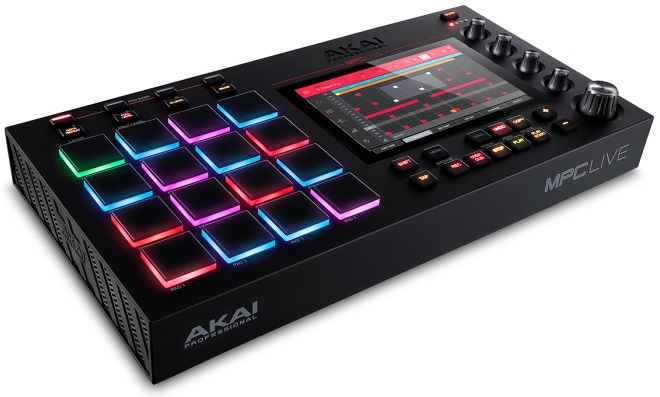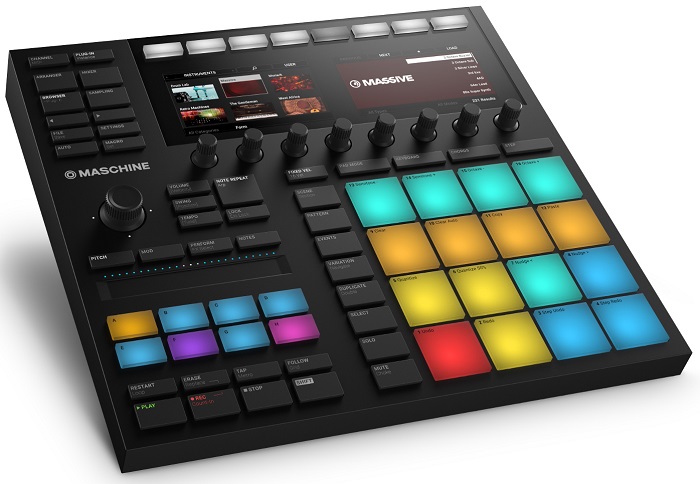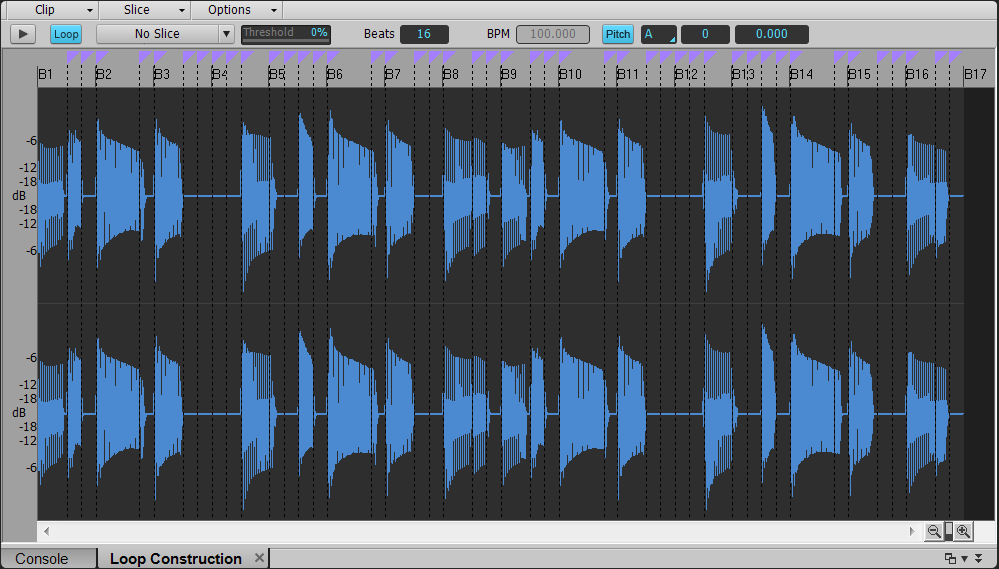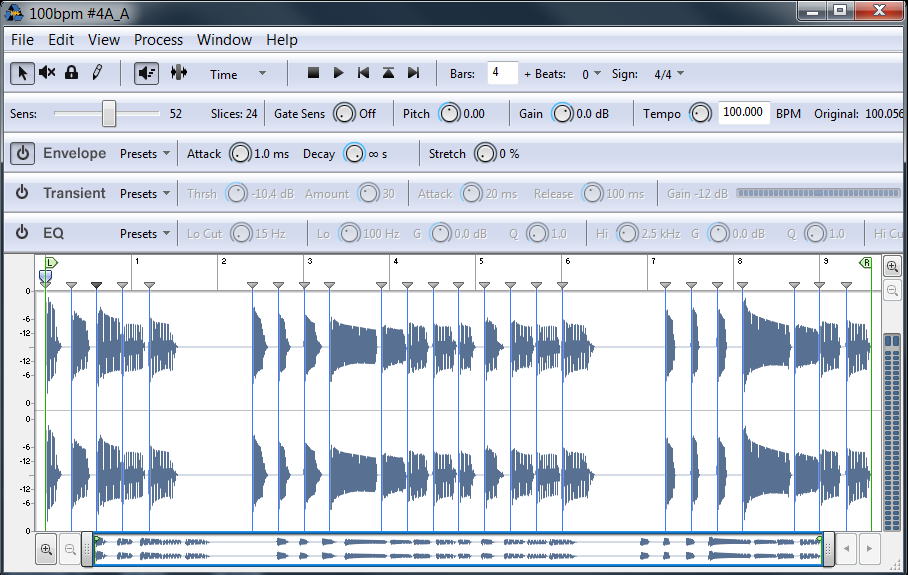Explore new types of inspiration for songwriting and performing
A great groove—whether a drum rhythm, an R&B rhythm guitar part or a bass line—makes you want to get up and dance. And often, repeating it increases its power, not only drawing in the listener but providing a great bed over which other parts can do their thing.
In many types of music today, the groove or beat—commonly called a “loop”—is the foundation and source of inspiration for a song, as opposed to the more traditional approach that builds from a chord progression or melody line. As a result, groove-oriented tools (both hardware and software) have exploded in the marketplace by offering products that are ideal for songwriters looking for inspiration, wanting to flesh out a demo, or needing backing tracks for live performance. And for some songwriters, grooves are the pathway to particular genres of music, like dance, hip-hop and world music. So, let’s cover how to get started with loops.
EASY GROOVES: SAMPLE LIBRARIES
Several companies make downloadable or physical (i.e., CD- or DVD-ROM) libraries containing loops in various genres, from hardcore techno to rock to dancehall reggae. There are three main file formats that can alter pitch and tempo in real time and are used for loop construction. You need to match the format to what your software supports, but most DAWs these days accept at least one or two formats, and can then alter (within reason) their tempo and key to fit the project at hand. These file formats are:
REX: Developed by Propellerheads, these files consist of audio “slices” triggered by MIDI files. They’re best suited to percussive parts.
Acidized WAV: Developed originally by Sonic Foundry, these use DSP (digital signal processing) and work well with various types of material. They generally deliver better results when sped up to match tempo rather than slowed down.
Apple Loops: This format was created for GarageBand and has become a popular option for the Mac. Technically, it uses the same approach as Acidized WAV files.
For more information about these formats, see the article How to Choose the Right Loop Format. But format matching isn’t always necessary. There are also proprietary formats, like Ueberschall’s Elastik series of libraries that consist of sounds along with a dedicated playback engine, and work like a standard plug-in. Or consider Ableton Live, which will accept any AIF or WAV file and apply its own proprietary looping techniques, usually with excellent results. While programs like Studio One, Samplitude, Pro Tools, Logic and Digital Performer accept some loop formats, they also apply their own time-stretching methods to standard files so these files match a project’s tempo or key.
Sample libraries come in four main types:
Collections of general-purpose loops: These are collections of loops (drums, bass, guitar, effects, some combination of the above, etc.) that are designed mostly to complement projects.
Construction kits: These take a short theme and break down each element into its own loop: guitar, percussion, keys, bass, etc. Ideal for creating soundtracks, they offer a complete musical statement you can modify. But because of the ability to stretch files, you can mix and match loops from different construction sets, often with great results.
Proprietary formats: loops that operate exclusviely with a particular company’s software. For example, E-mu’s Emulator X3 sampler takes advantage of its “Twistaloop” feature but won’t work with other software.
Multitrack drums: This includes the series of drum libraries from Discrete Drums, now distributed by Sonoma Wire Works. By using multitracked loops and song sections, you can vary the mix of the drums, drop parts, add room miking, and create extremely convincing drum parts. However, many virtual drum instruments (like BFD and Addictive Drums) include MIDI beats that can drive the drum sounds, thus allowing for editable multitrack drum loops.
CREATING LOOPS WITH HARDWARE
The granddaddy of hardware devices is the drum machine, whose programming paradigm is to create multiple grooves then string them together into a complete song. This evolved into devices like the MPC hardware groove boxes from Akai (Fig. 1) and similar devices from Roland, Yamaha, and Korg.

These typically feature buttons or pads that trigger sounds. Some operate like mini-composition workstations and include not just drum sounds but other instruments and effects. Then there’s Native Instruments’ Maschine (Fig. 2), a hardware controller that’s complemented by sophisticated, groove-oriented software.

These boxes can generate grooves as well as play them back. For example, when creating grooves, you might load various drum samples on each pad and use the box as you would a drum machine. Once you have a great loop, you can save it in the device or record it to a computer and use it in a software sequencer. For performing, you might load an entire groove/loop on each pad, then play them sequentially to build a song in real time. In many bands, one musician plays the groove box to create a rhythm section, while other musicians play guitar, keys, etc. on top of the rhythm bed.
Hardware and virtual synths and samplers also work in this context. Most keyboard workstations include onboard sequencers to create loops (or record linear tracks to play over loops), and some musicians load loops into samplers and play the keys to trigger different loops, thus creating on-the-fly arrangements. Furthermore, drum controllers and many keyboards offer pad controllers to provide a tactile interface that’s great for creating loops. Most workstations include ways to export any loops you create, either to an outboard storage medium (cloud storage, optical drive, external hard drive, etc.) or directly to a computer.
CREATING LOOPS WITH SOFTWARE
Programs like Propellerheads’ Reason, Presonus Studio One, Ableton Live, Cakewalk by BandLab, and Image-Line’s FL Studio make it easy to create loops within the program, which can be exported as WAV or AIF files for use with other hardware or software. Reason’s ReDrum drum machine comes bundled with a zillion drum kits—load one up, create a pattern, then export as an audio file. Other drum loop-creation tools include Spectrasonics’ outstanding Stylus RMX, EZdrummer from Toontrack and Steinberg’s Groove Agent. Various virtual instruments, like Native Instruments’ Kontakt and IK Multimedia’s SampleTank, also make it easy to play back samples as loops.
Cakewalk by BandLab and Magix Acid provide editing options that can turn WAV or AIF files into tempo- and pitch-sstretchable acidized files that you can use in software that is compatible with this format (Fig. 3).

However, acidizing a file is as much an art as a science. In fact, even commercially available sample libraries with acidized files often suffer from poor editing, meaning they don’t stretch over as wide a range as they should. The idea is to place a “marker” at each major transient in an audio file, and the DSP uses these markers to make decisions about how best to stretch the file. The better the choice of marker placements, the better the stretching results.
To create REX files, you need Propellerheads’ software program ReCycle (Fig. 4).

Creating REX files is arguably easier than creating acidized files, but it still requires skill and experience to edit files so that they can stretch reliably over a wide range of tempos and pitches while retaining decent fidelity.
OK, SO YOU HAVE SOME LOOPS…
And now the fun begins. What makes loop-based music really work is to choose loops that sometimes clash but complement each other: Throwing some Middle Eastern djembe percussion against a driving Led Zep-style drum part can give you both “heavy” and “light” at the same time. When assembling loops in a sequencer or other recording applications, think of loops as a collage: Cut them up, paste them and get creative—don’t just set a loop on autopilot and let it play back ad nauseum. Taking the last 1/16th note of a loop, copying it and pasting it four times to replace the last quarter note of a loop can make a great lead-in to the next loop.
Loops work best when they contrast with linear tracks played by real instruments and vocalists. The end result is a sweet combination of the mechanical and the organic, which can produce a result far greater than the sum of its parts.
RELATED ARTICLES
5 Tips for More Exciting Loop-Based Music Loop-based music isn’t only for Djs—loops can work in rock, movies, and more. With a little editing, you also add a lot of interest to loop-based music.
How to Create Loops from an Audio File Sometimes you want human variations, but sometimes you want hypnotic repetition. For the latter, here’s how to create a loop—from start to finish.
Make Your Own Drum Loops Why sound like everyone else? Create your own drum loops, and then you won’t have to settle for what other people think would work well with your music.
16 Loop Library Tips Now that Cakewalk is free, you can download it to take advantage of the ability to create stretchable loops, with features not found in other programs.
5 Ableton Live Tips From improving laptop efficiency in live performance, to a free wireless remote, to a metronome makeover, these tips help take Ableton Live even further.
